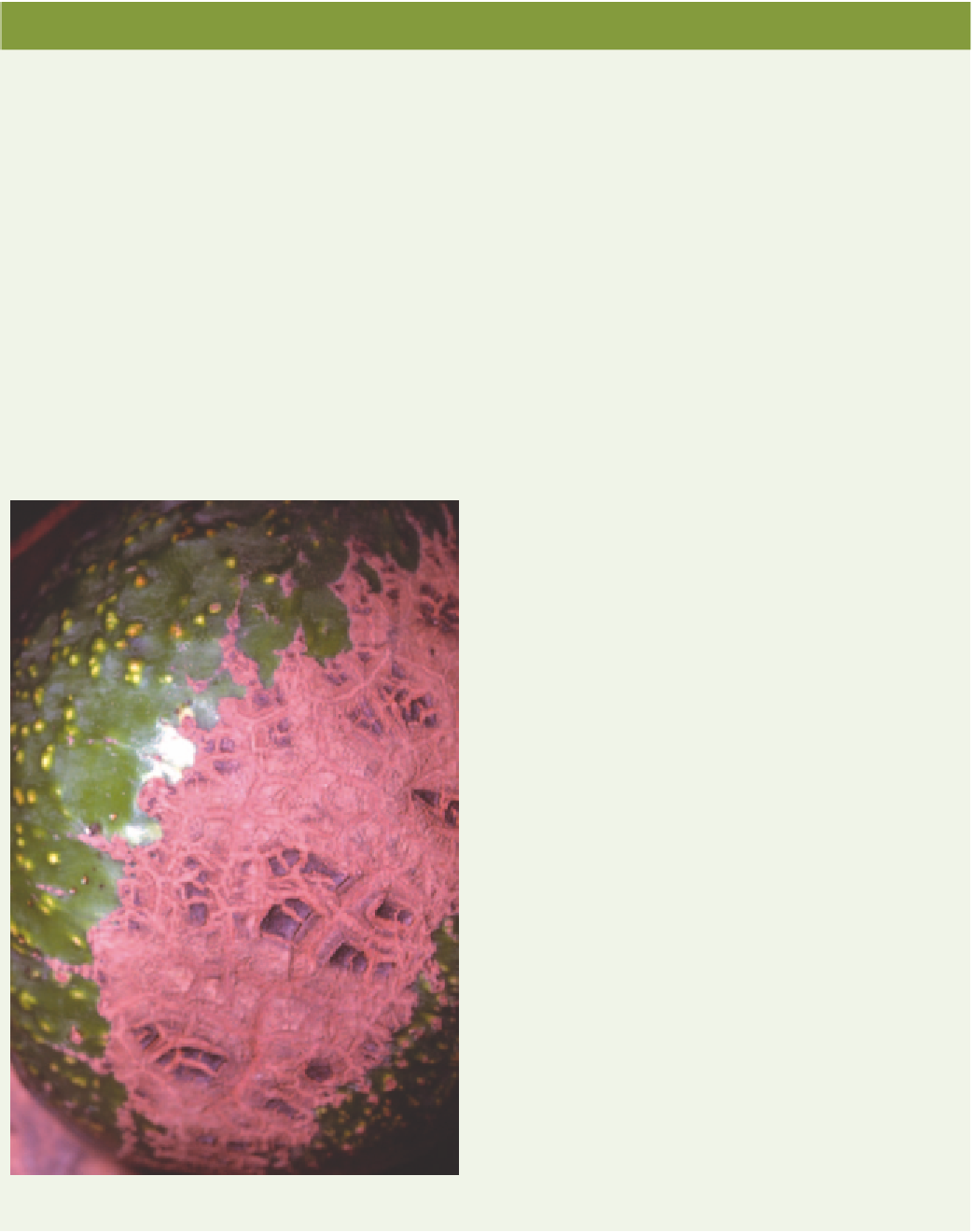Agriculture Reference
In-Depth Information
SCAB - BIOSECURITY THREAT
Cause
The fungus
Sphaceloma perseae
.
Lesions may also occur on leaf petioles, twigs and fruit
pedicels. These are oval - elongate in shape, slightly
raised and corky.
Cultivars vary in their susceptibility to scab.
Symptoms
Symptoms on fruit initially appear as corky, raised, and
brown to purplish-brown spots that are oval and
irregular in shape. As the disease progresses, spots
enlarge and coalesce to form large rough areas over the
fruit surface. Cracking in these rough areas may allow
secondary organisms to penetrate and rot the fruit.
Source of infection and spread
Cool, rainy weather promotes sporulation of
S. perseae.
Conidia may form on infected leaves, twigs and fruit
throughout the year when conditions are favourable.
Spores spread by wind, rain and insects.
The youngest tissues are the most susceptible to scab.
Leaves become resistant to infection one month after
emergence, and fruit become resistant once they reach
about half of full size. Disease development is most
severe if there is heavy rain or foggy weather when plant
tissue is at a susceptible growth stage. The disease is
also exacerbated by injuries caused by thrips, which
create wounds for
S. perseae
to enter. In Mexico, the
incidence and severity of scab correlated directly with
the incidence of thrips damage. The most frequently
found genera of thrips were
Scirtothrips
and
Frankliniella
.
On leaves, symptoms start as discrete small spots that
are often concentrated along the midrib and main veins.
As the disease progresses, leaves become variously
distorted and stunted. Lesions may coalesce into star-
like patterns, and shot-holes may develop in the leaves.
Importance
Severe losses result from fruit drop and the lower market
value of affected fruit.
There are limited quantitative data available on losses
due to scab. A survey conducted in a distribution centre
and three public markets in the city of Recife (Brazil),
showed an average of 39% incidence of fungal diseases
in avocado fruit.
S. perseae
was the fungus detected most
frequently (20%).
Scab is not present in Australia. The potential for entry
is high, however, as viable conidia can be carried with
fruit through the packing and shipping process. The
economic impact of the establishment of scab on
avocado production in Australia would be high,
particularly in humid coastal production areas.
What to do if you suspect scab
This pathogen is a biosecurity risk to Australia. Any
suspected affected plants should be reported to the
nearest Department of Primary Industries or the Plant
Health Australia hotline (1800 084 881).
Fig 4.22 Scab lesion on fruit. Note this should not be confused
with insect damage or wind rub.












